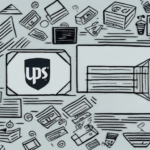Introduction to Business Shipping
Effective shipping strategies are crucial for businesses aiming to deliver products efficiently to their customers. Whether you're sending a package across the country or around the world, the right shipping method and provider can significantly impact your business's success. This guide explores the benefits of shipping, various shipping methods, selecting the best provider, optimizing costs, enhancing customer satisfaction, leveraging technology, and avoiding common mistakes.
Importance of Shipping for Business Success
Shipping is a vital component of operations for businesses of all sizes. From small online stores to large multinational corporations, the ability to deliver products reliably enables businesses to expand their customer base and increase revenue. According to the Statista report on global online sales, e-commerce sales worldwide are expected to reach over $6 trillion by 2024, highlighting the growing significance of effective shipping strategies.
Moreover, reliable shipping services help establish a strong brand reputation. Businesses offering fast and dependable shipping build trust and loyalty with their customers, leading to repeat business and positive word-of-mouth recommendations. This is particularly invaluable for small businesses looking to grow in competitive markets.
However, shipping can also be complex and costly, especially for startups. Factors like selecting the right carrier, managing inventory, tracking shipments, and budgeting require careful planning. Hence, businesses must explore all available options to find the most cost-effective and efficient shipping solutions.
Shipping Methods and Choosing the Right Provider
Types of Shipping Methods
There are various shipping methods available, each suited to different business needs:
- Parcel Carriers: Services like FedEx and UPS are ideal for small packages and offer reliable delivery options.
- Freight Shipping: Suitable for larger shipments, freight shipping solutions can handle bulk goods and heavy items efficiently.
- Air Cargo: The fastest shipping method, air cargo is ideal for urgent deliveries but can be more expensive.
- Maritime Shipping: Best for international shipments requiring cost-effective large-volume transport over longer periods.
Choosing the right method depends on your business’s specific needs, budget, and desired timeframe. Additionally, factors such as the fragility of items and destination (domestic vs international) play a crucial role in method selection.
Selecting the Best Shipping Provider
Choosing the right shipping provider ensures that your packages arrive on time and in good condition. Key factors to consider when evaluating providers include:
- Reliability: Consistent on-time deliveries and minimal damage rates.
- Cost: Competitive pricing and transparent fee structures.
- Shipping Times: Availability of expedited and standard shipping options.
- Customer Service: Responsive support for handling inquiries and issues.
- Coverage Area: Extensive service coverage, especially if you plan to ship internationally.
Comparing rates and reading reviews from multiple providers can help you find the best fit for your business needs.
Cost Optimization Strategies
Negotiating Shipping Rates
Shipping costs can accumulate quickly, but there are strategies to manage and reduce these expenses. One effective approach is negotiating rates with carriers. Businesses that ship frequently may qualify for discounted rates by committing to higher volumes. Additionally, using shipping aggregators or brokers can help compare rates across multiple carriers to find the most competitive prices.
For example, according to the UPS International Trade Center, businesses that integrate and optimize their shipping processes can achieve significant cost savings.
Optimizing Packaging
Efficient packaging plays a crucial role in reducing shipping costs. Using the appropriate size and type of packaging minimizes the dimensional weight, thereby lowering fees. Additionally, eco-friendly packaging materials not only contribute to sustainability but can also be more cost-effective. Investing in quality packaging that protects your products reduces the risk of damage and returns.
Enhancing Customer Satisfaction Through Shipping
Improving Shipping Options
Offering multiple shipping options enhances customer satisfaction by allowing customers to choose based on their needs and budget. Options can range from standard to expedited shipping, giving customers flexibility in their purchasing decisions.
Providing Tracking Information
Providing real-time tracking information keeps customers informed about their order status, reducing anxiety and inquiries. According to a report by the Persian Gulf Shipping Service, businesses that offer tracking services experience higher customer satisfaction and lower return rates.
Handling Returns and Exchanges
A clear and efficient returns policy is essential for maintaining customer trust. Offering free returns or easy exchange processes can increase customer loyalty and encourage repeat purchases. Implementing a streamlined returns system, including clear instructions and tracking, ensures a positive customer experience.
Leveraging Technology in Modern Shipping
Shipping Software and Automation
Shipping software solutions can automate label creation, documentation, and rate comparisons, significantly improving efficiency. Tools like ShipStation and Easyship help businesses manage their shipping processes more effectively.
Advanced Tracking and Inventory Management
Real-time tracking and integrated inventory management systems provide businesses with greater control over their shipping operations. This leads to improved accuracy, reduced errors, and enhanced overall efficiency.
Innovations in Shipping Technology
Emerging technologies like drone deliveries are set to revolutionize the shipping industry. Companies such as Amazon Prime Air are exploring the use of drones to deliver packages more quickly and efficiently, particularly in areas that are hard to reach by traditional methods. Additionally, smart packaging solutions equipped with GPS tracking and temperature control are becoming more prevalent, ensuring that products arrive safely and in optimal condition.
Trends and Innovations in E-Commerce Shipping
The e-commerce sector is continually evolving, introducing new trends and innovations in shipping to meet consumer demands. Key trends include:
- Same-Day Delivery: Offering same-day delivery options meets the growing customer expectation for immediate gratification. Services like Postmates and Uber Eats have popularized this rapid delivery model.
- Subscription-Based Shipping: Subscription models, such as those offered by Chewy, provide customers with regular deliveries at discounted rates, enhancing convenience and loyalty.
- Smart Packaging: Incorporating technology into packaging, such as sensors that detect tampering or monitor environmental conditions, ensures product safety and provides valuable data for businesses.
Case Studies and Common Mistakes
Successful Shipping Strategies
Leading companies like Amazon, Zappos, and Warby Parker exemplify successful shipping strategies. These businesses prioritize fast and reliable shipping, invest in advanced logistics technology, and maintain strong relationships with shipping providers. As a result, they offer same-day or next-day delivery options, which significantly enhance customer satisfaction and loyalty.
For instance, Amazon's investment in its logistics network, including warehouses and transportation fleets, allows them to offer unparalleled shipping speed and reliability.
Avoiding Common Shipping Mistakes
Many businesses encounter challenges in their shipping processes, often due to common mistakes such as:
- Inadequate Packaging: Poor packaging can lead to damaged products and increased return rates.
- Not Providing Tracking Information: Failing to offer tracking can result in customer frustration and increased inquiries.
- Ignoring International Shipping: Not offering international shipping limits market reach and potential revenue.
- Underestimating Shipping Costs: Neglecting to factor in shipping costs when pricing products can erode profit margins.
By recognizing and avoiding these pitfalls, businesses can optimize their shipping strategies for greater efficiency and customer satisfaction.
Conclusion
Shipping is a critical element of any business's operations, influencing customer satisfaction, brand reputation, and overall success. By understanding the benefits of effective shipping, selecting appropriate methods and providers, optimizing costs, enhancing customer experiences, leveraging technology, and avoiding common mistakes, businesses can establish robust shipping strategies. Investing in efficient and reliable shipping processes not only boosts customer loyalty but also drives business growth in the competitive market landscape.




















